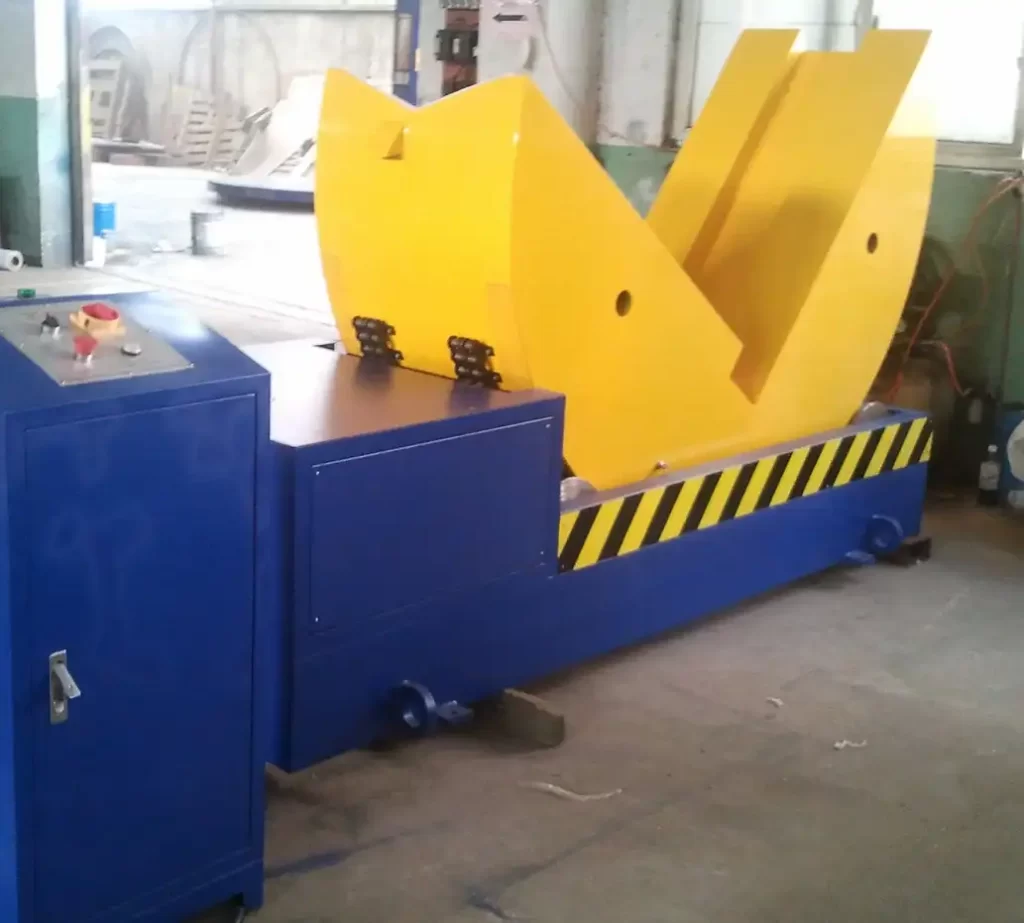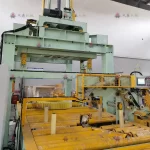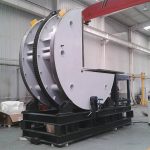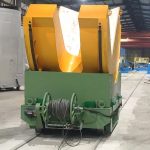Real-World Examples of Coil Upenders Improving Workplace Safety
- Real-World Examples of Coil Upenders Improving Workplace Safety
- 1. Understanding Coil Upenders: What They Do and Why They Matter
- 2. Case Study 1: Steel Manufacturing Industry – Reducing Injuries and Downtime
- 3. Case Study 2: Automotive Industry – Improving Ergonomics and Reducing Worker Fatigue
- 4. Case Study 3: Aluminum Processing Plant – Preventing Coil Damage and Enhancing Safety
- 5. How Coil Upenders Address Common Workplace Safety Issues
- 6. Additional Benefits of Coil Upenders in Enhancing Workplace Safety
- 7. What to Look for When Choosing a Coil Upender for Safety
- 8. Conclusion: Coil Upenders as a Key to Safer Workplaces

In today’s fast-paced industrial environment, safety is paramount. Heavy equipment like coil upenders plays a critical role in improving workplace safety, especially in industries where handling large coils is part of daily operations. This equipment helps minimize accidents, reduce worker fatigue, and ensure a more efficient workflow. But beyond theory, how do coil upenders perform in real-world situations? This article will delve into several real-world examples of how coil upenders are improving workplace safety across various industries, providing insights into their practical applications and the benefits they bring to businesses.
1. Understanding Coil Upenders: What They Do and Why They Matter
Before diving into the real-world examples, it’s crucial to understand what a coil upender is and why it has become a staple in many industrial settings. A coil upender, also known as a coil tilter or coil flipper, is a machine designed to rotate large, heavy coils of steel, aluminum, or other materials from a horizontal to a vertical position (or vice versa). These coils can weigh several tons, and manually handling them is not only inefficient but also hazardous.
The role of coil upenders in the workplace is twofold. First, they improve operational efficiency by automating the rotation process. Second, they significantly enhance workplace safety by reducing the need for manual handling, which is a leading cause of injuries in industrial environments. Let’s explore how these machines are transforming workplaces with real-world examples.
2. Case Study 1: Steel Manufacturing Industry – Reducing Injuries and Downtime
In the steel manufacturing industry, handling coils is a routine but challenging task. Coils of steel can weigh several tons, making them extremely difficult to maneuver manually. One prominent example is a steel manufacturing plant in Ohio, where worker injuries due to coil handling were becoming a major concern.
Before the implementation of coil upenders, workers manually used forklifts and cranes to lift and turn coils, a process that frequently led to accidents. Workers experienced back strains, crushed limbs, and other severe injuries. The company decided to invest in automated coil upenders to address these issues.
After the installation of the coil upender, the results were immediate and impressive. Injuries related to coil handling dropped by 60% within the first six months. Moreover, the automated process also reduced the time spent turning coils, decreasing downtime by 20%. By improving safety and efficiency, the coil upender not only saved the company on workers’ compensation claims but also significantly enhanced productivity.
3. Case Study 2: Automotive Industry – Improving Ergonomics and Reducing Worker Fatigue
The automotive industry relies heavily on coiled materials for the production of various components. In one particular automotive parts manufacturer, handling coils was a labor-intensive process. Employees had to manually strap and tilt coils, leading to high levels of worker fatigue. The repetitive nature of the task caused musculoskeletal disorders (MSDs), a common ailment in industries with physically demanding tasks.
This company decided to incorporate a hydraulic coil upender into its operations to improve worker ergonomics. The upender took over the heavy lifting, tilting, and positioning of the coils, eliminating the need for workers to manually handle them. This significantly reduced the physical strain on the workers.
Within the first year of using the coil upender, the number of workers reporting fatigue-related injuries dropped by 40%. Employee satisfaction increased, as the machine allowed them to focus on less physically taxing tasks. This shift also led to an increase in production, as workers were no longer slowed down by the tiring process of handling coils manually.

Get Your Best Solution !
4. Case Study 3: Aluminum Processing Plant – Preventing Coil Damage and Enhancing Safety
Coil upenders are not only beneficial for workers but also for the materials being handled. In an aluminum processing plant in Canada, coil damage was a frequent issue. Workers were manually handling large, fragile coils of aluminum, and the process often resulted in dents, scratches, or worse, complete coil destruction. This not only posed a safety hazard but also led to costly material losses.
The company decided to install an automated coil upender to improve both safety and material handling. The coil upender allowed for the safe and secure flipping of the coils, reducing the risk of human error and material damage. With the upender in place, the plant saw a 30% reduction in coil damage, leading to significant cost savings. Additionally, workers reported feeling safer and more confident in their ability to handle the coils without the risk of injury.
5. How Coil Upenders Address Common Workplace Safety Issues
Coil upenders solve several critical safety challenges that industrial workers face daily. These machines are engineered to minimize human intervention in dangerous tasks, which is essential in industries handling heavy and hazardous materials. Below are some of the common workplace safety issues that coil upenders help address:
- Manual Handling Injuries: One of the most frequent causes of workplace injuries in industrial settings is manual material handling. Lifting, turning, and transporting heavy coils exposes workers to strains, sprains, and severe injuries. Coil upenders automate these processes, removing the need for workers to manually perform dangerous tasks.
- Crush Hazards: When coils are improperly handled or transported, there is a significant risk of crush injuries. Coil upenders securely clamp and rotate the coils, ensuring that they are handled safely and minimizing the risk of accidents.
- Fatigue and Repetitive Strain Injuries: Coil handling is physically demanding, and repetitive tasks can lead to worker fatigue and long-term injuries like MSDs. Coil upenders reduce these risks by taking over the most physically taxing aspects of the job.
6. Additional Benefits of Coil Upenders in Enhancing Workplace Safety
While the safety benefits of coil upenders are evident in the reduction of worker injuries, these machines offer additional advantages that contribute to a safer work environment:
- Precision and Control: Coil upenders are designed with precision controls, allowing operators to safely rotate coils with minimal risk of misalignment or accidents. This level of control significantly reduces the chance of mishaps during the flipping process.
- Improved Workflow: By automating the coil handling process, coil upenders streamline operations, reducing the likelihood of errors and accidents caused by rushed or improper handling.
- Enhanced Operator Training: Most modern coil upenders are equipped with advanced features that are easy to learn and operate. This simplifies the training process, ensuring that all employees understand how to safely operate the machine, further enhancing workplace safety.
7. What to Look for When Choosing a Coil Upender for Safety
When selecting a coil upender, safety should always be a top priority. Here are a few key features to consider:
- Weight Capacity: Ensure that the coil upender can handle the maximum coil weight your operation requires. Overloading a machine can lead to accidents and mechanical failures.
- Safety Features: Look for upenders with safety interlocks, emergency stop buttons, and overload protection systems. These features can prevent accidents and protect workers in case of machine malfunctions.
- Ease of Operation: A user-friendly control system ensures that operators can safely and efficiently manage the upender without risking injury due to confusion or complex procedures.
- Durability and Maintenance: Choose a machine built to withstand the demands of your industry. A reliable, well-maintained coil upender is less likely to fail or cause accidents.
8. Conclusion: Coil Upenders as a Key to Safer Workplaces
In industries where handling large, heavy coils is a daily task, coil upenders have proven to be a game-changer for improving workplace safety. As demonstrated in the real-world examples above, these machines not only reduce the risk of injuries but also improve efficiency, minimize coil damage, and create a safer, more productive work environment.
By investing in a high-quality coil upender, companies can protect their workers from the dangers of manual coil handling, reduce downtime, and save on costs associated with injuries and material damage. As industrial operations continue to evolve, automation through equipment like coil upenders will remain a vital component of a safe and efficient workplace.
Coil upenders are more than just a tool—they are a long-term investment in safety and productivity. The sooner companies adopt these machines, the sooner they can experience the tangible benefits in terms of improved safety and operational efficiency.
Embrace the future of coil handling with automated coil upenders, and watch as they transform both the safety and efficiency of your workplace.

Get Your Best Solution !








